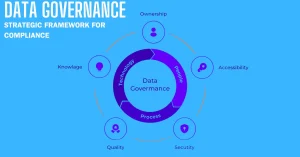When we hear the word “hacker”, our minds typically jump to malicious activity. However, there are many different types of hackers out there, some of whom don’t have any malicious intent at all.
With the constantly evolving landscape of cybersecurity, it is important for CEOs to familiarise themselves with the different types of hackers out there (good and bad). Each type has its own unique set of skills and motivations that make them a potential threat to companies, so let’s take a look at the three main categories of hackers: black-hat, white-hat, and grey-hat.
Black-Hat Hackers
A blackhat hacker is your stereotypical hacker – the one you might see depicted in movies or television shows. They are skilled in gaining unauthorised access to servers, networks, or other computer systems and they use their knowledge for malicious purposes such as stealing data or defacing websites. Black-hats often have little regard for the law and may even be willing to take on high-risk jobs if the payout is attractive enough.
White-Hat Hackers
White-hat hackers are considered “good guys” when it comes to hacking because they use their skills for ethical reasons. They specialise in testing security systems by trying to find vulnerabilities before malicious actors can exploit them. Many white hats are employed by organisations as part of their cybersecurity team, helping to ensure company safety by finding weaknesses in security protocols and implementing fixes accordingly.
Grey-Hat Hackers
Grey hats bridge the gap between black and white hats; they do not necessarily have malicious intentions but will still break into systems without permission. Their primary motivation is often financial gain, which may include selling stolen data online or charging companies a fee for fixing any security flaws they uncover. It should be noted that while grey hats may not be considered criminals per se, they still operate outside of existing laws regarding hacking and could potentially face legal repercussions if caught.
Knowing who you’re dealing with when it comes to hackers is essential for any CEO looking to protect their business from cyber threats
In this article, we explored three of the main types of hackers out there to be aware of, and discussed their individual motives and methods so you know what you’re up against when it comes to cybercrime. Remember that no matter what type of hacker you encounter, prevention is key – so make sure your organisation’s cybersecurity measures are up to date!





